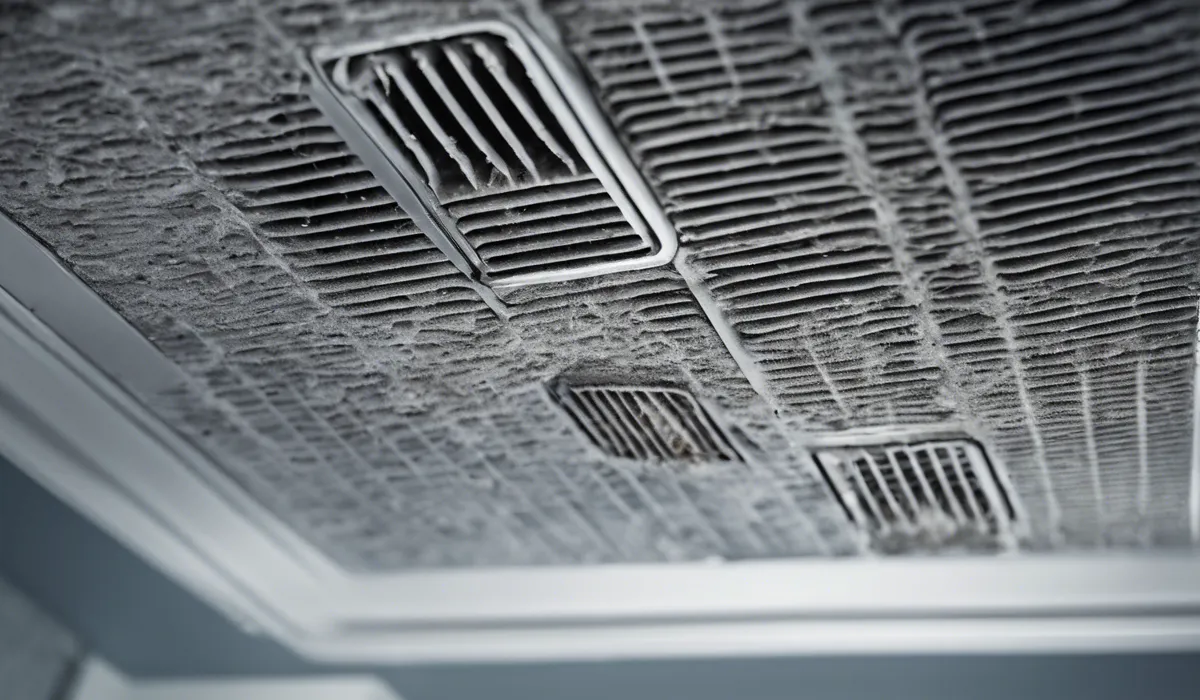Yes, mold can travel through air vents. Mold spores are lightweight and can become airborne, allowing them to spread through HVAC systems and circulate within a building. It’s essential to maintain clean, dry air ducts to prevent mold dissemination.
Understanding Mold and Airborne Spores

Definition of Mold
Mold is a type of fungus that thrives in moist environments and can grow on almost any organic material, including wood, paper, carpet, and foods.
It is an essential part of nature, breaking down dead organic matter, but when it grows unchecked indoors, it can become a health hazard.
Types of Mold Commonly Found in Homes
Many types of mold can invade a home, but some of the most common include Cladosporium, Penicillium, Aspergillus, and Stachybotrys chartarum, often called black mold.
Each type has its characteristics and can cause various health issues if not addressed promptly.
How Mold Reproduces Through Spores?
Mold reproduces by releasing tiny spores that are invisible to the naked eye. These spores can travel through the air and settle on surfaces.
If they land in an environment with the right conditions, they will grow into new mold colonies.
Conditions That Facilitate Mold Growth and Spore Dispersal
Mold needs moisture, warmth, and organic material to grow. High humidity, water leaks, and poor ventilation can create ideal conditions for mold spores to settle and multiply.
Ensuring your home is well-ventilated and dry is essential for preventing mold growth.
Mold Movement Through Air Vents

The Role of HVAC Systems in Mold Spore Circulation
Heating, Ventilation, and Air Conditioning (HVAC) systems can play a significant role in distributing mold spores throughout a building.
If mold is present in one area, spores can easily be sucked into the air ducts and blown into other parts of the home, exacerbating the issue.
Common Pathways for Mold Spores to Enter and Move Through Air Ducts
Mold spores can enter air ducts through various means, such as open windows, doors, or even on clothing and shoes.
Once inside the HVAC system, the spores can be carried to different areas, settling in new locations that provide the right conditions for growth.
Consequences of Mold Spores Spreading Through Air Vents
The spread of mold spores through air vents can lead to widespread mold contamination. This can cause health problems, especially for individuals with allergies, asthma, or compromised immune systems.
It can also cause unpleasant odors and damage to your home’s structure and furnishings.
Real-Life Scenarios and Studies Highlighting Mold Spread Via Air Systems
Studies have shown that mold contamination in HVAC systems is a significant problem. In one case, a school had to be closed for mold remediation after students and staff reported respiratory issues.
The mold was found to have spread through the school’s air vents, impacting multiple classrooms.
Prevention and Remediation of Mold in Air Vents

Regular Maintenance and Cleaning of HVAC Systems
Proper maintenance and regular cleaning of HVAC systems are critical in preventing the spread of mold spores.
This includes replacing filters, cleaning ducts, and ensuring that all components are functioning correctly to reduce moisture levels within the system.
Importance of Humidity Control and Proper Ventilation
Controlling humidity levels and ensuring proper ventilation in your home are key to preventing mold growth.
Using dehumidifiers and exhaust fans can help maintain a dry environment, making it less conducive to mold spore survival and growth.
Tips for Identifying Mold in Air Ducts
Be on the lookout for signs of mold in your air ducts, such as a musty smell or visible mold growth around vent openings.
Inspecting your ducts regularly can help you catch mold problems early before they become widespread.
Professional Mold Remediation Processes for Air Vents
If you discover mold in your HVAC system, it’s crucial to have it addressed by professionals who specialize in mold remediation.
They have the tools and expertise to safely and effectively remove mold from air ducts and restore the air quality in your home.
Prevention Strategies to Keep Mold From Returning to Air Ducts
After remediation, ongoing prevention is vital. This includes keeping indoor humidity levels low, ensuring proper ventilation, and performing regular HVAC inspections.
By taking these steps, you can significantly reduce the risk of mold returning to your air ducts.
FAQs About Mold Traveling Through Air Vents
Can mold spores spread through HVAC systems?
Yes, mold spores are capable of becoming airborne and can spread through HVAC systems, circulating throughout a building.
Is it common for mold to travel through air vents?
It is possible for mold to travel through air vents if the spores become airborne, which can happen if there is mold growth in or near the HVAC system.
How can I prevent mold from spreading through my air vents?
To prevent mold dissemination, it’s essential to maintain clean, dry air ducts and address any moisture issues promptly.
What are the signs that mold is spreading through my air vents?
Signs of mold spreading through air vents include a musty odor, visible mold growth around vent areas, and increased allergy symptoms among occupants.
Can cleaning my air ducts remove mold spores?
Cleaning your air ducts can help remove mold spores and prevent them from circulating through your HVAC system.
Final Thoughts
Mold spores, due to their lightweight nature, can indeed become airborne and traverse through air vents.
The spread of mold through HVAC systems is a concern, as it can circulate throughout a building.
To mitigate this risk, it is crucial to maintain air ducts that are both clean and dry, thus hindering mold’s ability to disseminate.
